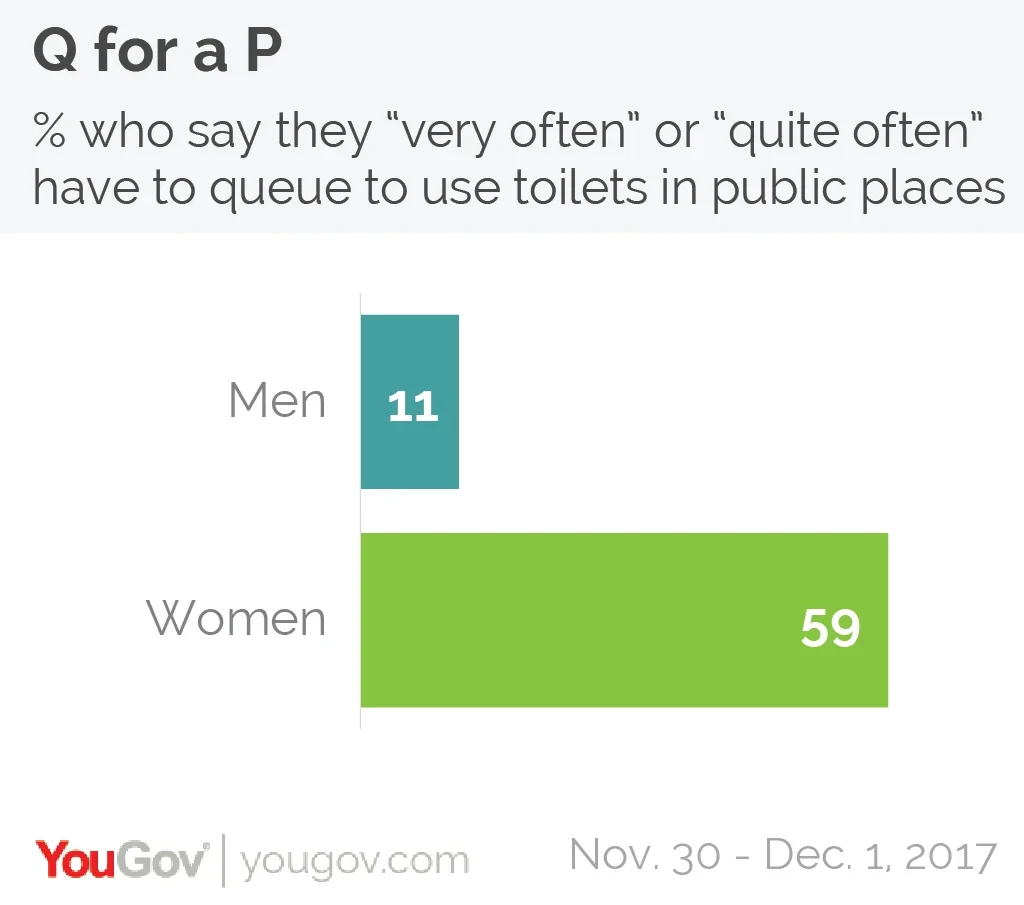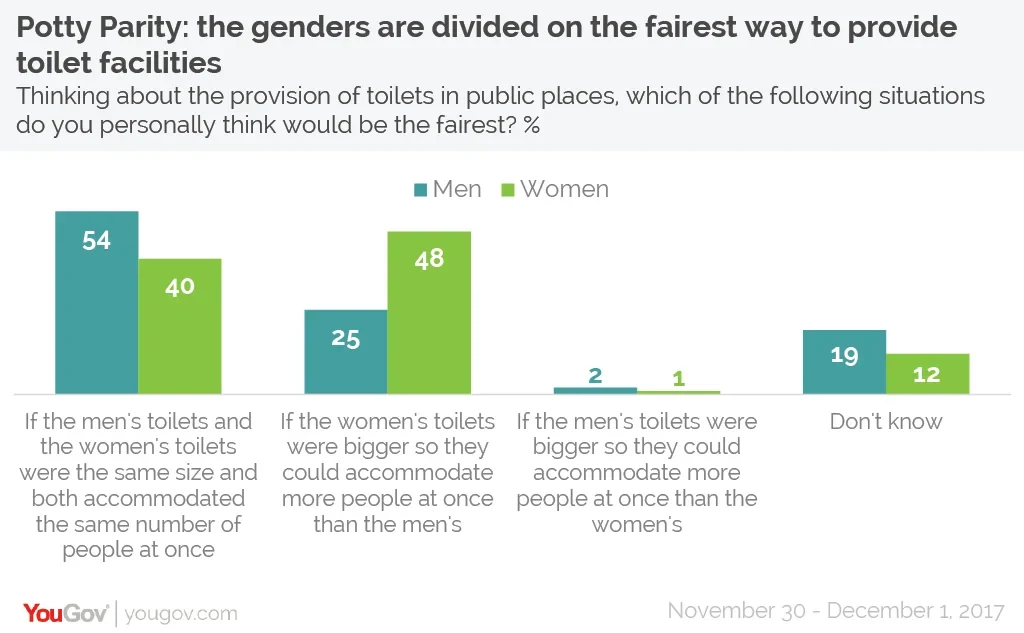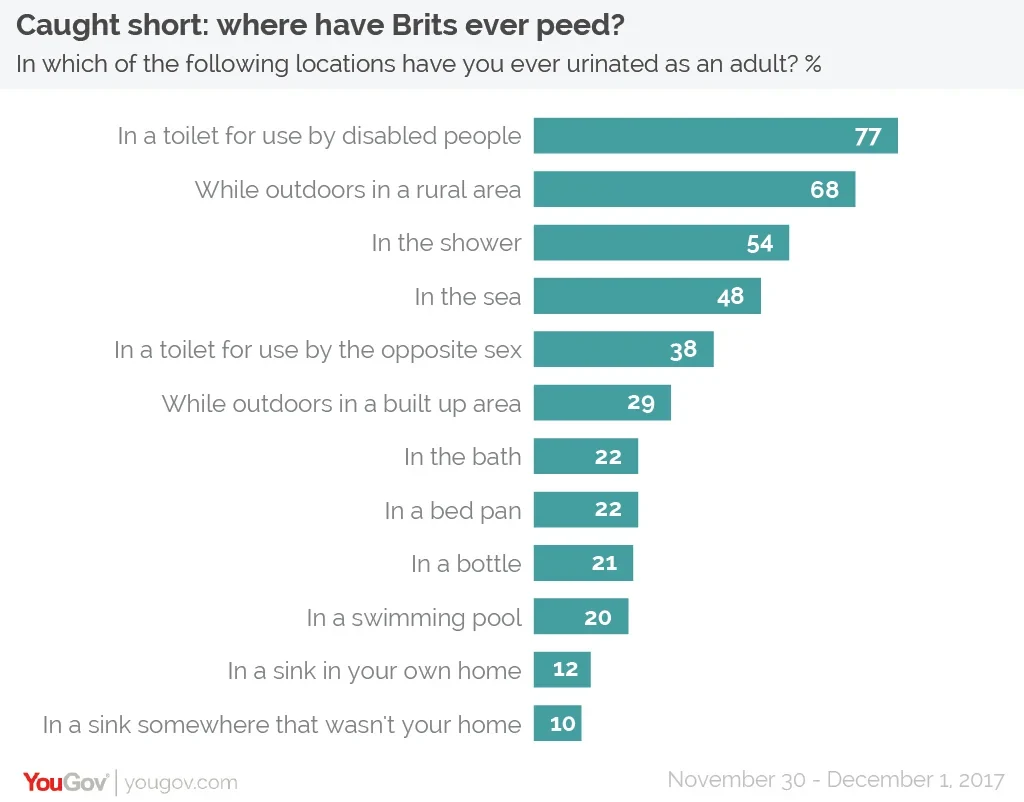Women are more than five times as likely as men to say they regularly have to queue for the loo
In September of last year a sexism row erupted in Amsterdam after a woman was taken to court and fined for relieving herself in an alley after a night out.
While there are 35 public urinals for men in the city there are just three public toilets that can be used by women, and the judge overseeing the case caused outrage by suggesting she should have used the men’s urinals.
Potty Parity
As underscored by the case, women get a raw deal when it comes to public toilets. Now new YouGov Omnibus research reveals the public’s views on ladies’ loos.

It will have escaped few people’s notice that there are frequently queues snaking out of women’s restrooms, while men can seemingly breeze into their own WCs and find a spot with ease. In fact only 11% of men report having to queue for public toilets on a regular basis, compared to 59% of women.
Part of the problem is that male and female toilet facilities tend to be constructed the same size, but studies show that the requirement for women to use cubicles means that going to the toilet takes twice as long, and thus queues are more likely to form. On top of this, women also have more reasons to have to go to the toilet than men, e.g. to change sanitary products.
Trying to redress this unfairness is known as “potty parity”. If women’s toilets were to be able to operate at the same levels of efficiency as men’s toilets they would have to be bigger and accommodate more people at once.
YouGov Omnibus put this dilemma to the British public, asking which situation they would consider to be fairer: toilets of the same size that accommodated the same number of people, or female toilets that could accommodate more people than the men’s loos.
The public comes down on the side of equally sized toilets by 47% to 37%, although the genders are split – men support same-size WCs by 54% to 25%, while women back bigger restrooms for their gender by 48% to 40%.

Is it ok to use the opposite gender's toilets?
Also in question is whether people think it is acceptable to use the opposite sex’s toilets in the first place. While the Dutch judge clearly thinks in cases of urinary distress it is, how does the British public feel?
The majority (56%) believe it is acceptable for a woman who badly needs to urinate and might otherwise wet themselves to use the men’s toilets. Only 29% disagree. The figures are almost the same if the situation were reversed and a man needed to go in the women’s toilets – 52% think this would be ok and 32% do not. In both scenarios, men and women are united in their views.
Brits are far less hospitable towards someone faced with the dilemma of having to go in an alley or risk wetting themselves. Only around a quarter think it would be acceptable for either a man (23%) or a woman (27%) to let loose outdoors in a built up area, while 61-64% don’t think the risk of wetting themselves excuses urban peeing.
Many Brits have urinated in... unconventional locations
Desperation means that many Brits have sometimes had to relieve themselves in unconventional locations. Like the lady in the Dutch capital, 29% of Brits have taken an outdoor pee in an urban area, although men are much more likely to have done so than women (46% vs 13%).
Four in ten Brits (38%) have at some point done as the judge recommended and used the opposite gender’s restrooms (and in this case, women are more likely to have done so than men at 42% vs 34%). A further 77% have made use of facilities designed for the disabled.
Laziness seems to be responsible for some of the other locations Britons have taken a whizz. More than half of Brits (54%) have peed in the shower, 21% in a bottle and 12% in the sink of their own home. Nor do some Brits seem to have an aversion weeing in a body of water they are currently occupying – 48% have peed in the sea, 22% the bath and 20% a swimming pool.











